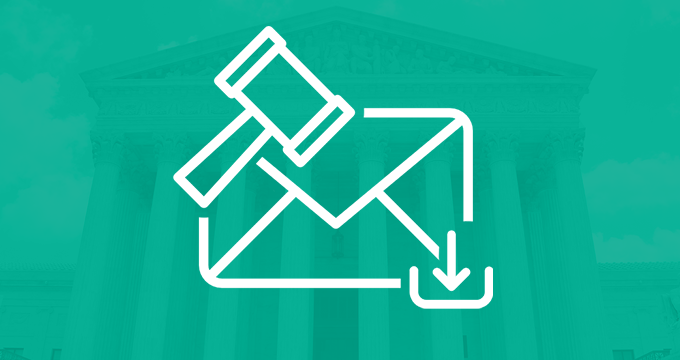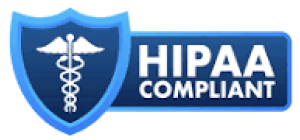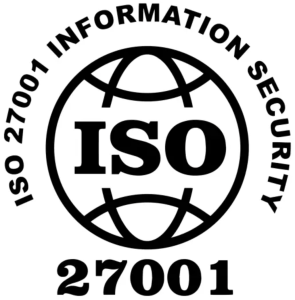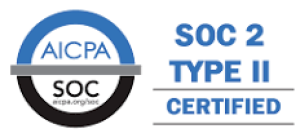Email harassment in the workplace is a common issue that not only affects the well-being of employees but also poses significant legal and compliance risks for organizations.
This article explores the dynamics of email harassment, outlining the responsibilities of compliance and legal departments. It also highlights how effective data archiving can be in both preventing and addressing these serious workplace concerns.
Understanding Email Harassment
Definition and examples
Email harassment refers to any unwelcome, often repetitive, behavior conducted through email that can be considered intimidating, offensive, or hostile.
Different forms of email harassment at work include:
- Sending excessive or repetitive emails that are unnecessary or irrelevant, creating a feeling of being monitored or harassed.
- Emails with intimidating or threatening language, aiming to instill fear or compel certain actions.
- Communicating offensive or derogatory comments through email, targeting aspects like race, gender, sexuality, or personal attributes.
- Continuously sending critical or negative emails, undermining the recipient’s confidence or professional abilities.
- Excluding someone from important work-related emails and isolating them from essential communications and team interactions.
A common example — A female employee receives numerous emails from a male colleague containing derogatory comments about her appearance and unwelcome advances.
In another instance, an employee was subjected to intimidating and threatening emails from their supervisor, demanding extra work hours without pay, creating a pressurized and fearful work environment.
Impact on work environment and employee well-being
The effects of email abuse extend beyond legal ramifications. It can lead to:
- Toxic work environment,
- Lower employee morale,
- Increased absenteeism
- Mental health issues among staff.
In a survey conducted in 2021, it was found that 44% of employees have experienced some form of harassment at work, including personal, discriminatory, and online harassment. Interestingly, 38% reported experiencing harassment remotely through email, video conferencing, chat apps, or by phone.
The study also revealed that 53% of workplaces address harassment immediately after it’s reported. However, 34% of employees have left a job due to unresolved harassment issues, highlighting the significant impact of harassment on employee turnover and workplace culture.
Understanding these impacts is key to comprehending the full scope of email abuse and the importance of addressing it promptly and effectively.
Compliance Requirements and Email Harassment
Ensuring compliance with relevant laws and regulations is crucial for effectively managing email harassment in the workplace. Non-compliance can lead to legal consequences, including lawsuits and penalties.
Overview of relevant laws and regulations
Understanding the legal landscape is essential for compliance. In the U.S., several federal laws, including Title VII of the Civil Rights Act, the Americans with Disabilities Act (ADA), and the Age Discrimination in Employment Act (ADEA), play a significant role in defining workplace harassment, including that conducted via email.
Additionally, many states have enacted special laws that may impose stricter standards. Familiarity with these laws helps create compliant and effective policies to address email harassment.
Compliance officer’s role in preventing and addressing harassment
The compliance officer plays a pivotal role in preventing and addressing email abuse.
Their responsibilities are to:
- Ensure that the organization’s policies comply with federal and state laws.
- Develop and implement training programs to educate employees about appropriate email communication.
- Establish clear procedures for reporting and responding to email harassment incidents.
- Regularly review and update policies to reflect changes in the law and organizational needs.
Training and policy development for email conduct
Effective training and clear policies are the backbone of preventing email harassment.
These should cover:
- What constitutes appropriate and inappropriate email communication.
- Steps employees should take if they encounter or witness email harassment.
- The process for reporting suspected harassment, including assurances of confidentiality and non-retaliation.
Responding to Email Harassment Incidents
Initial steps for legal and compliance teams
Effectively responding to incidents of email harassment is crucial for maintaining a safe and compliant workplace.
Upon receiving a complaint, the legal and compliance teams should:
- Acknowledge the complaint and assure the employee of confidentiality and protection against retaliation.
- Initiate a prompt and thorough investigation.
- Preserve relevant email evidence using data archiving solutions to ensure an unaltered record.
Legal and disciplinary actions following compliance protocols
After investigating the incident, appropriate actions should be taken based on the findings:
- Implement disciplinary measures in accordance with company policy and legal requirements.
- Provide support and resources to the victim, if necessary.
- Review and refine email policies and training programs to prevent future occurrences.
This approach ensures that each case of email abuse is handled with the seriousness it deserves, reinforcing a zero-tolerance policy towards harassment and upholding the organization’s commitment to a respectful and compliant workplace environment.
The Role of Data Archiving in Managing Email Harassment
Data archiving is a critical tool for identifying, investigating, and responding to cases of email harassment in the workplace. It involves the storage of organizational data, including emails, in a way that is secure, searchable, and retrievable.
Archiving solutions offer features like advanced search capabilities, tagging, and keyword alerts — all of which are invaluable for monitoring and retrieving email communication.
How data archiving helps in identifying harassment patterns
Data archiving solutions enable organizations to efficiently monitor email exchanges and identify potential harassment patterns.
By using advanced search functions and analytics, these systems can detect unusual email activities or the use of specific keywords that might indicate harassing behavior.
Early identification of such patterns allows for timely intervention and potentially prevents escalation of the issue.
Data archiving plays a critical role in investigating email harassment allowing to:
- Retrieve and review relevant email communications.
- Analyze email patterns and content for signs of harassment.
- Secure and maintain the integrity of evidence for potential legal proceedings.
Regular audits and updates to the archiving system further strengthen compliance efforts and keep the organization abreast of evolving legal requirements.
Best Practices in Maintaining a Harassment-Free Email Environment
Maintaining a harassment-free email environment requires continuous effort and vigilance. Best practices include:
- >
- Policy development and enforcement — Craft clear, comprehensive policies regarding email conduct, ensuring they cover what constitutes harassment and the consequences of such actions. Review and update these policies regularly to align with the latest legal and social standards.
- Training and awareness programs — Conduct training sessions that educate employees about the email policy, identify what constitutes harassment, and encourage respectful communication. Regularly refresh this training to keep the information current and top-of-mind.
- Monitoring and reporting mechanisms — Implement systems for monitoring email communications for signs of harassment and establish clear, confidential channels for reporting incidents. Encourage a culture where reporting harassment is supported and free from retaliation.
- Utilization of technology — Leverage data archiving and monitoring tools to track email communications, enabling the identification of potential harassment patterns and ensuring evidence preservation for any necessary investigations.
- Fostering an inclusive culture — Promote a workplace culture that values diversity, inclusivity, and respect. Encourage open communication and ensure that all employees understand the importance of a harassment-free environment.
By integrating these practices, organizations can create a safer and more respectful workplace, significantly reducing the occurrence of email harassment.
Jatheon’s cloud email archiving solution can help you capture data automatically, find important information, and manage your data with ease.
Conclusion
Tackling email harassment in the workplace demands a proactive approach. From understanding the legal implications to implementing effective data archiving and proactive measures, organizations must remain vigilant and responsive.
By leveraging technology, updating policies, and fostering a respectful culture, companies can create a safer, more inclusive workplace.
FAQ
How can someone stop receiving harassing emails?
First, clearly communicate to the sender that their behavior is unwelcome and must stop. If it continues, use email filters to block or automatically direct these messages to a separate folder. Document all instances of harassment for any potential legal actions. In severe cases, you should report the harassment to the appropriate authorities within the organization or law enforcement. Additionally, seeking support from HR or legal advisors can provide guidance on further actions.
How should an organization respond to an email harassment complaint?
Immediate actions should involve acknowledging the complaint, ensuring confidentiality, and starting a thorough investigation. Utilizing data archiving tools to gather evidence is critical. Based on the findings, appropriate disciplinary actions should be taken, adhering to the company’s policies and legal guidelines.
What legal risks does a company face for not addressing email harassment?
Failure to address email harassment can lead to legal issues, including lawsuits for fostering a hostile work environment. It can also result in penalties for non-compliance with workplace harassment laws and regulations, and negatively impact the organization’s reputation and work environment.











